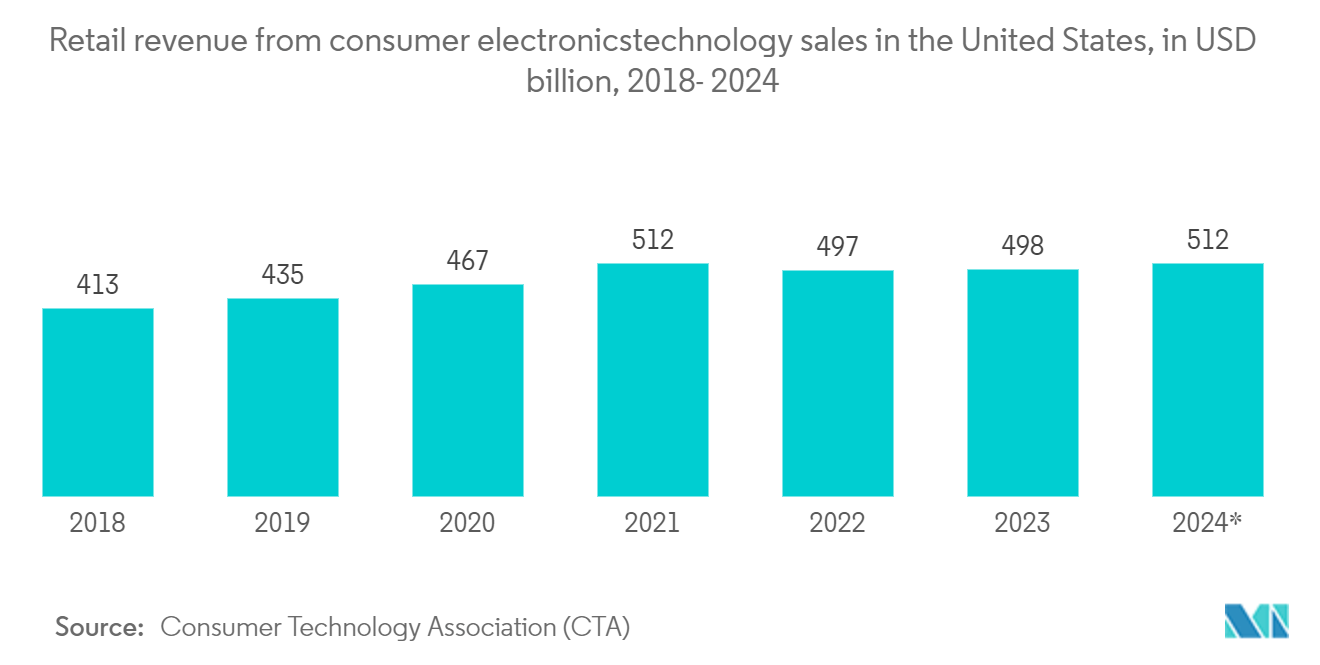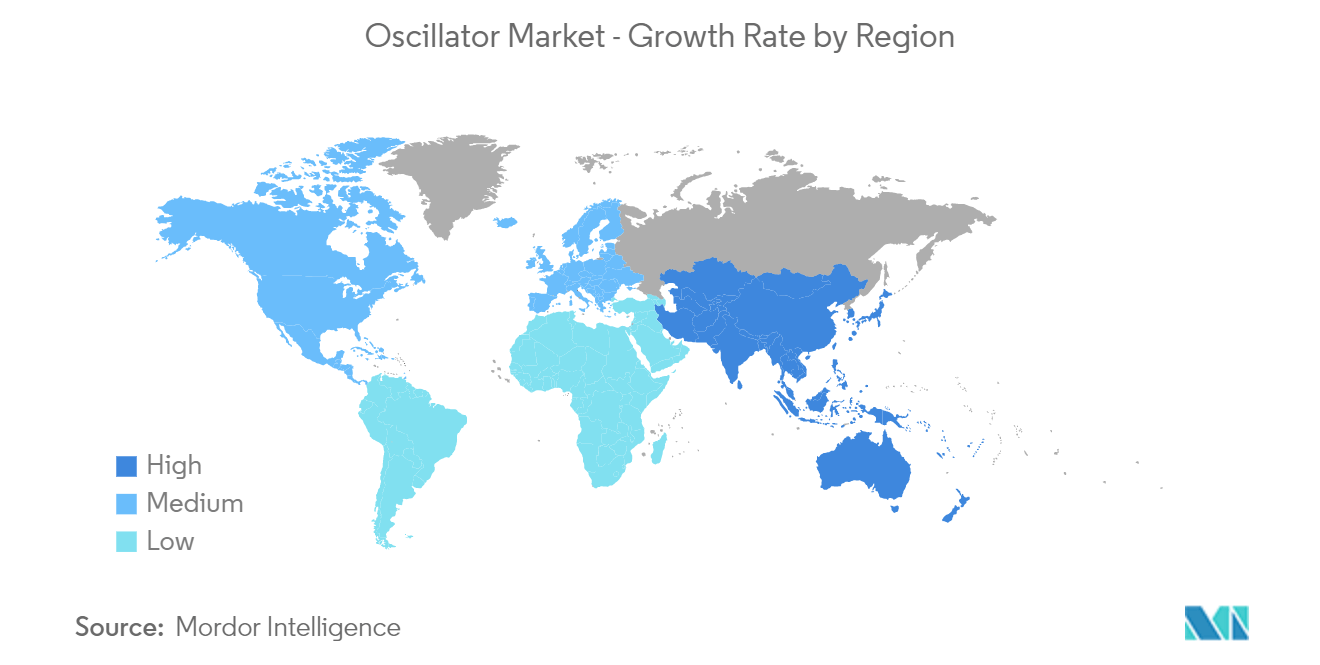Market Trends of Oscillator Industry
Consumer Electronics End-User Industry to Occupy a Major Share
- Frequent new launches of consumer electronic products are expected to fuel the market for crystal oscillators. In the consumer electronics industry, frequency control products are important, and crystal oscillators are commonly used for this application. Thus, crystal oscillators find use in a wide range of consumer electronics products such as smart wearables, cellphones, video games, and cable TV systems.
- The growing penetration of mobile devices, such as smartphones and tablets, creates significant demand for crystal oscillators. Depending on the applications processor, partitioning, and other functions it supports, a typical smartphone or tablet design can comprise several timing devices, including one or more 32 kHz quartz crystals (as per SiTime Corporation).
- The increasing adoption of the Internet of Things (IoT) is another growth catalyst for the market. For instance, as per Ericsson, there were 1.9 billion cellular IoT connections in the world in 2022, which is expected to grow to 5.5 billion in 2027, registering a CAGR of 19% over the period. In line with this trend, there is an increased need for oscillators that can meet the small size and low power criteria in IoT applications and wearable devices.
- For instance, in May 2022, TAITIEN introduced ultra-low current crystal oscillators that feature current consumption that is less than 1.4μA and can run on an ultra-low voltage of 1.5V. With low power consumption, small size, and high precision, these oscillators can be widely used in wearable devices and the IoT field.
- Furthermore, innovations in MEMS timing technology are making significant contributions to space and power savings in new wearable applications, besides improving reliability and costs. Companies such as SiTime Corporation are offering a range of MEMS-based oscillators for low-power IoT and wearables applications.

Asia-Pacific Region to Register one of the Fastest Growth Rates
- The Asia-Pacific is projected to have the fastest growth, owing to a rapidly expanding smartphone consumer base primarily in the region's major economies, such as India and China. The latest technological breakthroughs have assisted the advancements in new oscillators that can make the overall processes more efficient and significantly improve accuracy in different applications.
- Moreover, China is the world's largest producer and exporter of consumer electronics. Thus, it is one of the most prominent regions for the market, with oscillators being used in a wide range of electronic devices.
- China also leads in 5G adoption globally. As per GSMA, the number of 5G base stations in China exceeded 2.3 million at the end of 2022, including around 887,000 built during the year. The country will be the first market with 1 billion 5G connections, reaching the milestone by 2025, as per the organization. Timing and clocking are crucial for high data rate transmission with 5G networks, creating even greater demand for oscillators.
- In Japan, the automotive industry accounted for a significant share of the total demand for oscillators, having emerged as the 5th largest automobile market in 2022, as per the German Association of the Automotive Industry or VDA. Oscillators are widely used in automotive applications, including brake controls, anti-blocking systems, airbags, and tire-pressure-monitoring systems.
- South Korea is another significant market for crystal oscillators in the region, owing to the massive adoption of the technology by the end-user industries in the country. Also, Korea Aerospace Industries (KAI), South Korea's sole aircraft manufacturer, recently revealed its ambition to rise as the No. 7 aerospace company in the world by 2050 through significant investments in next-generation businesses. Such investments in the aerospace industry also create a favorable growth scenario for the market.


